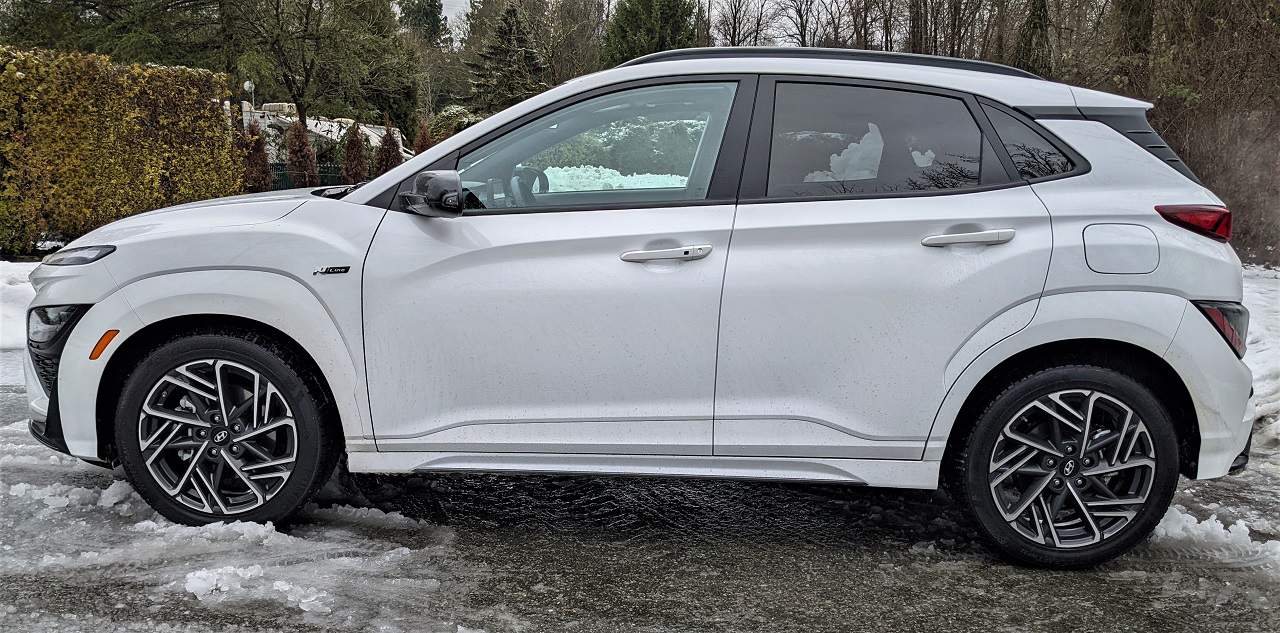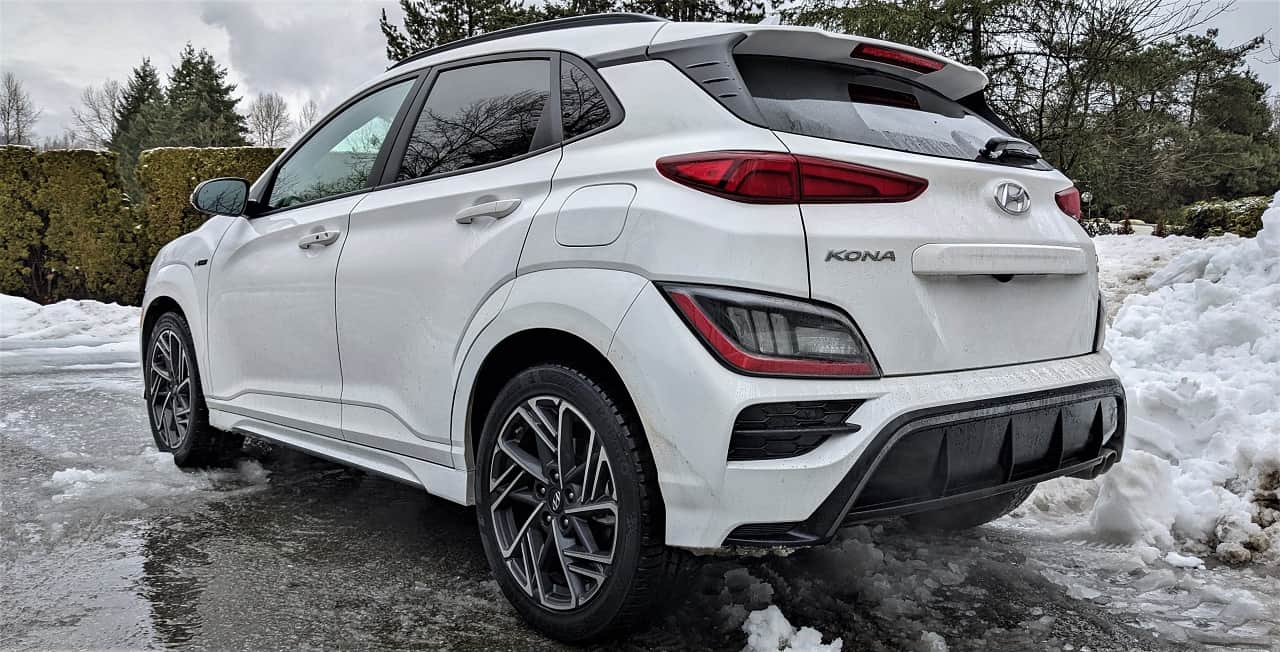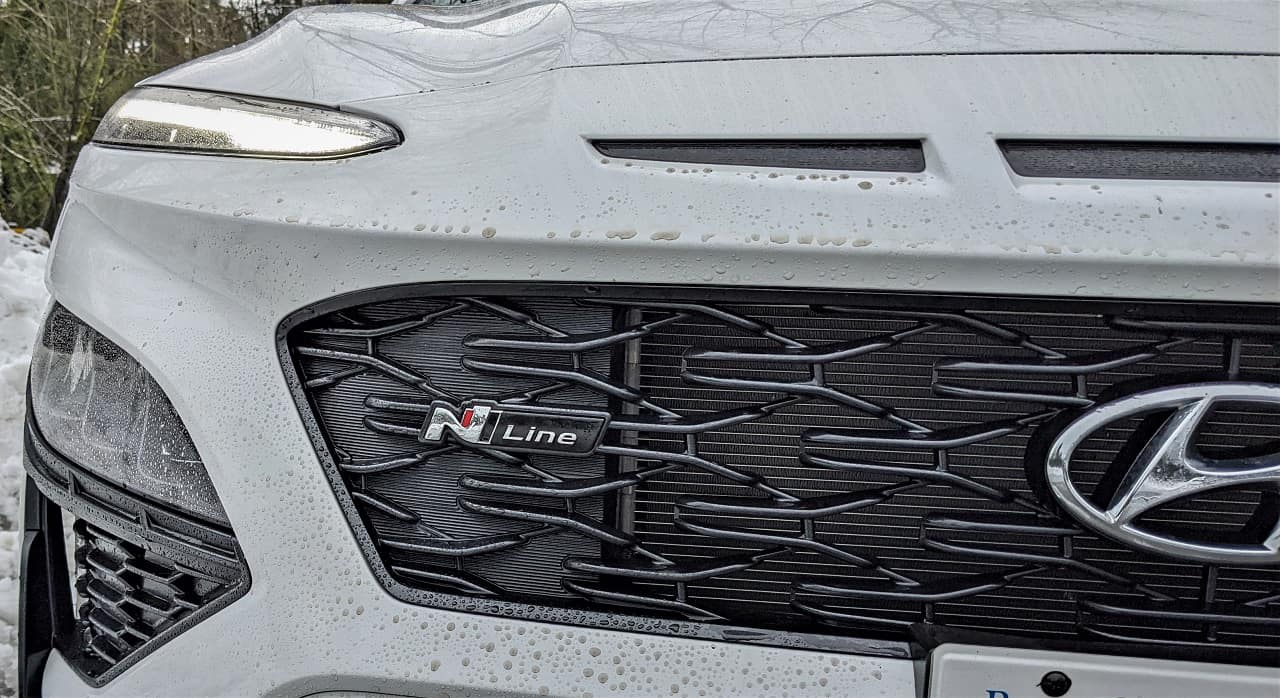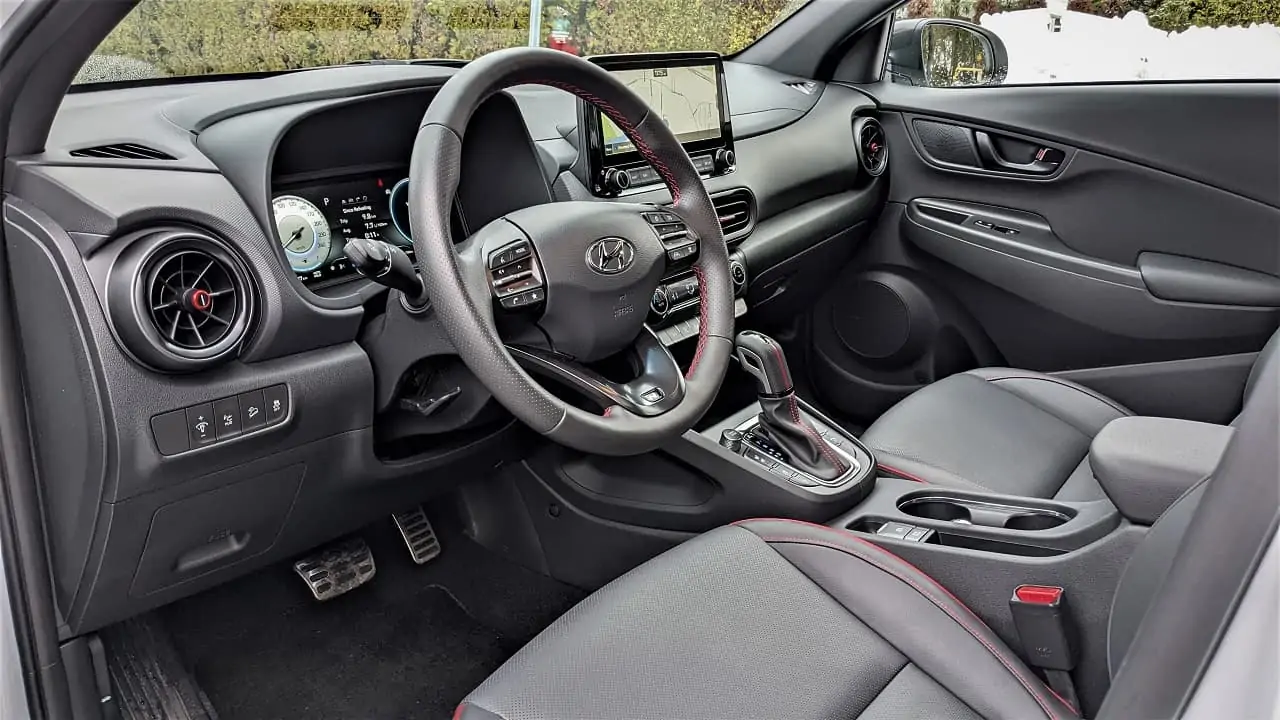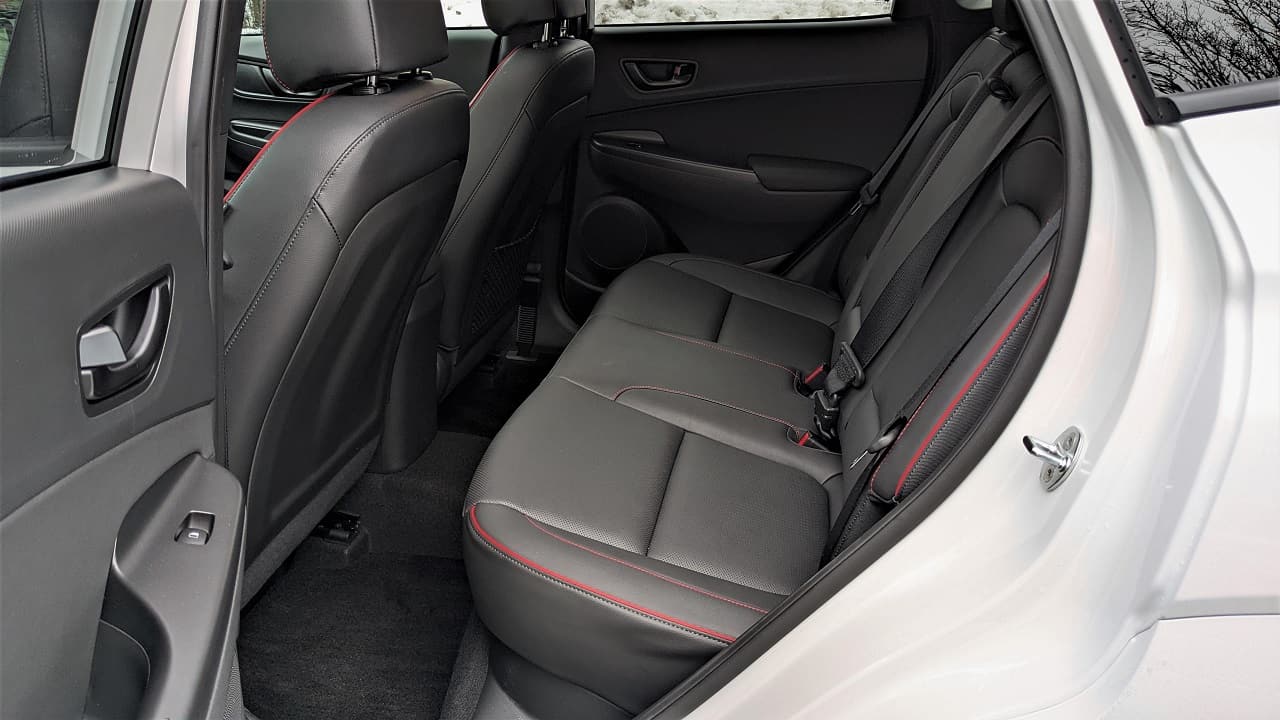The Hyundai Kona has been on sale since 2017, it slots in the subcompact CUV segment; however, this is not the smallest Hyundai CUV you can buy. If you want the smallest Hyundai CUV, those honors to the Hyundai Venue, which has been on sale since 2019.
The Hyundai Kona is offered in quite a variety of trims with different sized engines and even different propulsion systems. There are two 2.0-liter 4-cylinder engines, a 1.6-liter 4-cylinder engine, and even an all-electric powertrain available.
How much will the Kona N line cost?
Currently there are three trims, with gasoline engines, offered on the Kona. The base Kona Essential has a starting price of $21,999 for the FWD model, adding AWD is a $2,000 option. The Kona Preferred has a starting price of $23,999, and $25,999 with AWD. This trim is also offered with the Sun (sun roof) and Leather package, which adds an additional $2,600 to the price. The Kona N-Line AWD has a starting price of $28,099 and it can be equipped with the Ultimate Package for an additional $5,600. These prices do not include $1,825 for delivery and destination and taxes.
There will be a fourth trim available in the near future, the Kona N (not N-line). The “N” vehicles are the much sportier versions of Hyundai vehicles, we first reviewed a full N vehicle a couple of years ago with the Veloster N. Hyundai has expanded the N line of vehicles to include the Kona and Elantra now.
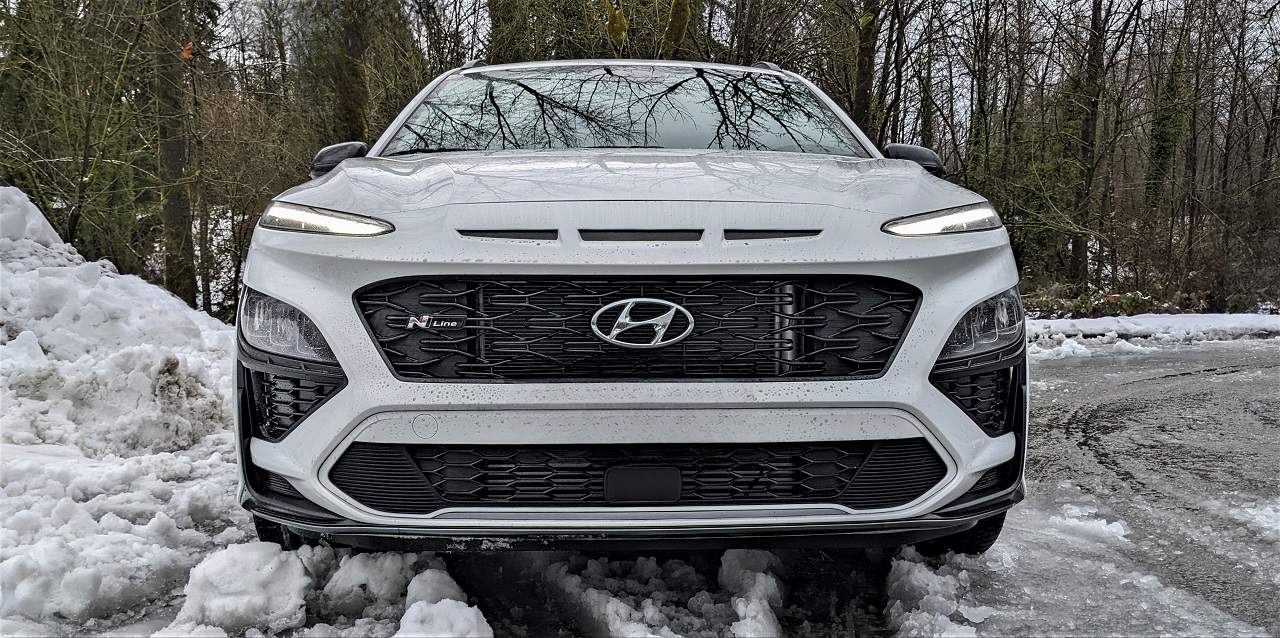
Hyundai Kona Engines
The Essential and Preferred trims come with naturally aspirated 2.0-liter 4-cylinder engines, producing 147 horsepower at 6,200 rpm and 132 pound-feet of torque at 4,500 rpm. Power is sent to the either the front or all-wheels via a Continuously Variable Transmission.
The Kona N-Line is powered by a turbocharged 1.6-liter 4-cylinder engine, producing 195 horsepower at 6,000 rpm and 195 pound-feet of torque between 1,600 – 4,500 rpm. Power is sent to all-four wheels via a 7-speed dual-clutch transmission.
What is the difference between the Kona N and the Kona N line?
The most obvious difference between the Kona N and Kona N-line is the engines. While the N-Line is more powerful than the standard Kona, the Kona N will be powered by a turbocharged 2.0-litre 4-cylinder engine, producing 276 horsepower between 5,500 – 6,000 rpm and 289 pound-feet of torque between 2,100 – 4,700 rpm. Kona N will have eLSD (electronic Limited Slip Differential), 14.2″ front rotors, an N-tuned electronically tuned suspension, and 19″ wheels with Pirelli P-Zero tires. These additions should make for some fun times.
Kona N-Line Driving
The Kona is a small vehicle, with the N-Line’s added power and the DCT, it’s a pretty decently fun vehicle to drive. The torque and HP figure of 195 is more than enough to motivate this little CUV. It comes with Normal, Sport, and Smart modes. In the Normal mode it feels like your average small CUV, putting it in the Sport mode makes it livelier with sharper throttle response and the transmission holding gears longer and downshifting as you decelerate. In the Sport mode the digital gauges change their color to red, red is always the sporty color.
The DCT does a good job at switching gears quickly enough. The AWD system is quite good, we had a decent amount of snow on the roads during my review and the Kona N-Line never struggled for grip, thanks to winter tires and the AWD system. In normal driving, the Kona sends all its power to the front wheels but under acceleration and slippery conditions, power is also sent to the rear wheels. Power can be locked to be split between the front and rear wheels by pushing a button to the right of the gear lever, which comes in handy during snowy conditions like we had.
According to Hyundai, the Kona N-line should consume 8.8/7.4/8.2 L/100 km in city/highway/combined driving. We averaged 11.2 L/100 km, our consumption was much higher because of the unseasonably cold weather, where I idled the car more than I normally would while I cleaned the snow off the car on a daily basis, and most of the trips were short trips in city driving.
Kona N-Line Interior
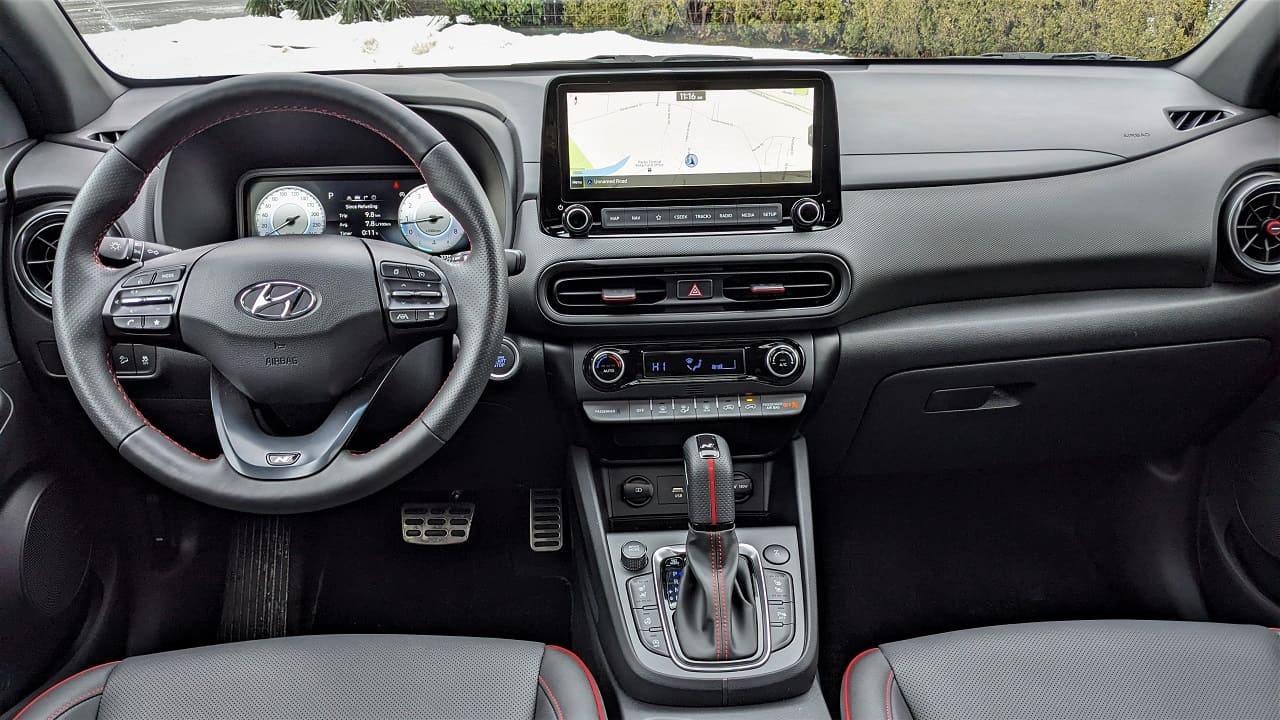
The Kona is a subcompact CUV, so don’t expect it to be huge on the inside, if you are looking for more room, maybe the Hyundai Palisade is the one you’re looking for. It isn’t too bad in the front seats, I found the front seats to be comfortable and there was more than enough room for me, I’m 5’ 8” and could move the seat even further away from the steering wheel if I was taller. However, in the back seat, there wouldn’t be much leg room if I had moved the seats any further than my normal driving position. Having the seats set for my ideal driving position, I found the rear seat leg room to be adequate. Head room was also good. Taller passengers will find the back seats cramped.
The interior is mostly hard plastics, which is the norm in this segment. Because our review car was the N-Line, there were hints of red thrown in there, giving it a sportier look. The steering wheel featured red stitching, with the same stitching applied to the gear lever cover.
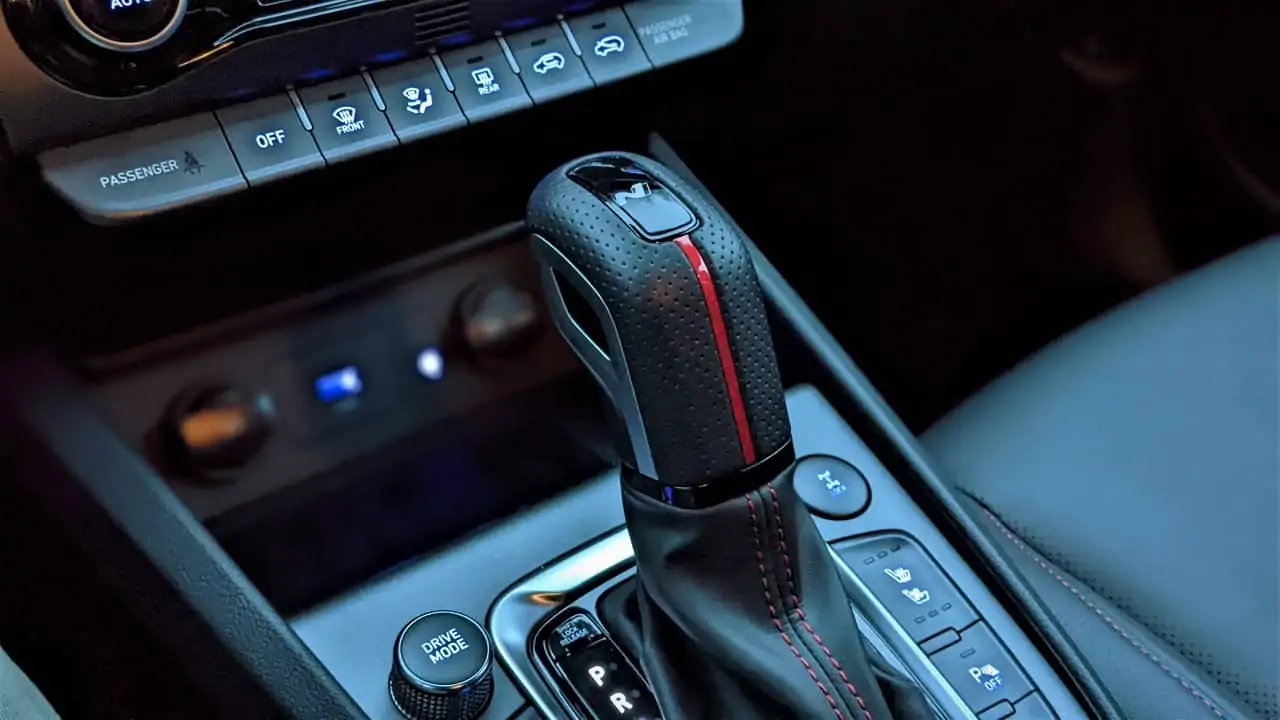
Our car had the optional Ultimate Package, which included a larger 10.25” touchscreen display, the 8” screen is standard on lower trims. The infotainment system features a real volume and tuning knob, and physical buttons underneath for Navigation, Radio, Media, Setup, Favorites, and Seek/Track. Under this is a separate area for the climate control system, which features a small LCD screen and physical buttons. Below is a small storage compartment for a phone, our car came with wireless charging, and USB outlets and a 12-volt outlet.
Our review Kona N-Line came with the Ultimate Package, which includes the following items:
- High Beam Assist
- Parking Distance Warning — Reverse
- Electronic parking brake with automatic vehicle hold
- Highway Driving Assist
- Forward Collision-Avoidance Assist with Pedestrian and Cyclist Detection
- Adaptive Cruise Control with traffic stop and go
- 10.25″ touch-screen display
- 10.25″ full digital instrument cluster
- Apple CarPlay and Android Auto
- Navigation system
- Power sunroof
- Wireless charging pad
- Electrochromic auto-dimming rear view mirror with HomeLink
- Leather seating surfaces with red stitching
- Ventilated front seats
- Harman/Kardon premium audio with 8 speakers
- Automatic temperature control
- Head-Up Display
- Rain-sensing windshield wipers
- LED headlights (low and high beam)
- LED tail lights
- 8-way power driver’s seat
Final Thoughts
The 2022 Hyundai Kona is a fun little CUV, especially in the N-Line trim. The Kona N should be even more fun and I’ll be sure to bring you a review of that car. There are many choices in the subcompact CUV segment and I think the Kona is on par with the competition. However, what the competition doesn’t have is not only one but two performance-oriented offerings. If you are looking for a vehicle in this segment and want a bit (or a lot more) oomph, then the Kona is the only choice. It’s great to see Hyundai hasn’t forgotten about the enthusiast, even in a category of vehicles that are not known for being fun.
For more information on the Kona N and other Hyundai vehicles, check out hyundaicanada.com.

